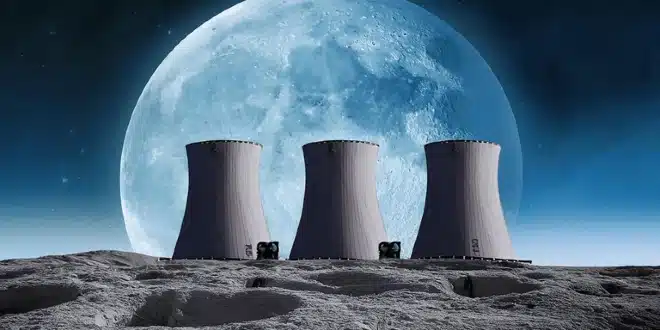Russia and China have entered into a formal agreement to construct a nuclear-powered facility on the Moon, intended to serve as a critical infrastructure component for the planned International Lunar Research Station (ILRS). The two countries signed a memorandum of cooperation earlier this month, outlining their shared responsibilities for the ambitious endeavor. The Russian space agency, Roscosmos, will contribute the nuclear reactor that will power the base, which is expected to be operational by 2036.
The ILRS will be a joint effort between Moscow and Beijing, with participation from 17 other nations that have expressed interest in the program. The goal is to establish a long-term scientific and exploration outpost on the Moon’s south pole, capable of supporting both robotic and eventual human activity. According to a Roscosmos announcement on May 8, the facility will be used to conduct foundational scientific research and test advanced technologies for sustainable operations in a remote environment.
The project’s scope includes uncrewed operations in its initial phases, with the nuclear power station set to be assembled autonomously using remote construction technologies. Roscosmos chief Yury Borisov confirmed in a 2024 interview that the reactor would be built without direct human involvement, noting that the required technological systems are already developed, though no additional technical details were provided.
Chang’e-8 Mission to Pave Way for China’s First Crewed Lunar Landing
The first major step in realizing this vision is scheduled for 2028, when China plans to launch the Chang’e-8 mission. This mission will attempt to place a human on the Moon for the first time in China’s history and begin preparations for the base’s long-term infrastructure. Parts of the station are expected to be delivered to the Moon gradually between 2030 and 2035.
Beijing and Moscow initially announced plans for the ILRS in 2021, and the concept has since evolved to include additional infrastructure beyond the south pole. Future plans involve linking the central base to two other lunar nodes—one at the equator and another on the Moon’s far side. Wu Yanhua, chief architect of China’s deep space exploration program, indicated in a 2024 briefing that these extensions would likely be completed by 2050.
Integrated Lunar Ecosystem to Include Vehicles, Communications, and Orbiting Stations
The ILRS is envisioned as a fully integrated lunar ecosystem. Alongside the central station, the broader plan includes a network of communication links between the Moon and Earth, as well as high-speed systems across the lunar surface. Planned surface assets will feature a variety of vehicles, including long-range autonomous rovers, pressurized and unpressurized crewed transport units, and a hopper designed to navigate lunar terrain through vertical movement.
In addition, China plans to launch an orbital station around the Moon, which will serve as a logistical and research hub connected to the surface base through the nuclear power infrastructure. These developments align with China’s expanding role in space exploration, marked by recent successes such as the Chang’e-6 mission, which retrieved the first-ever samples from the Moon’s far side in June 2024. The country also intends to bring back Martian soil samples in the near future, having already deployed the Zhurong rover on Mars.
As cooperation between China and Russia deepens in extraterrestrial exploration, the ILRS represents one of the most extensive and long-term space collaboration initiatives to date. The partnership is set to reshape global space priorities, combining nuclear energy capabilities, autonomous construction, and lunar resource development to support sustained scientific operations beyond Earth.


